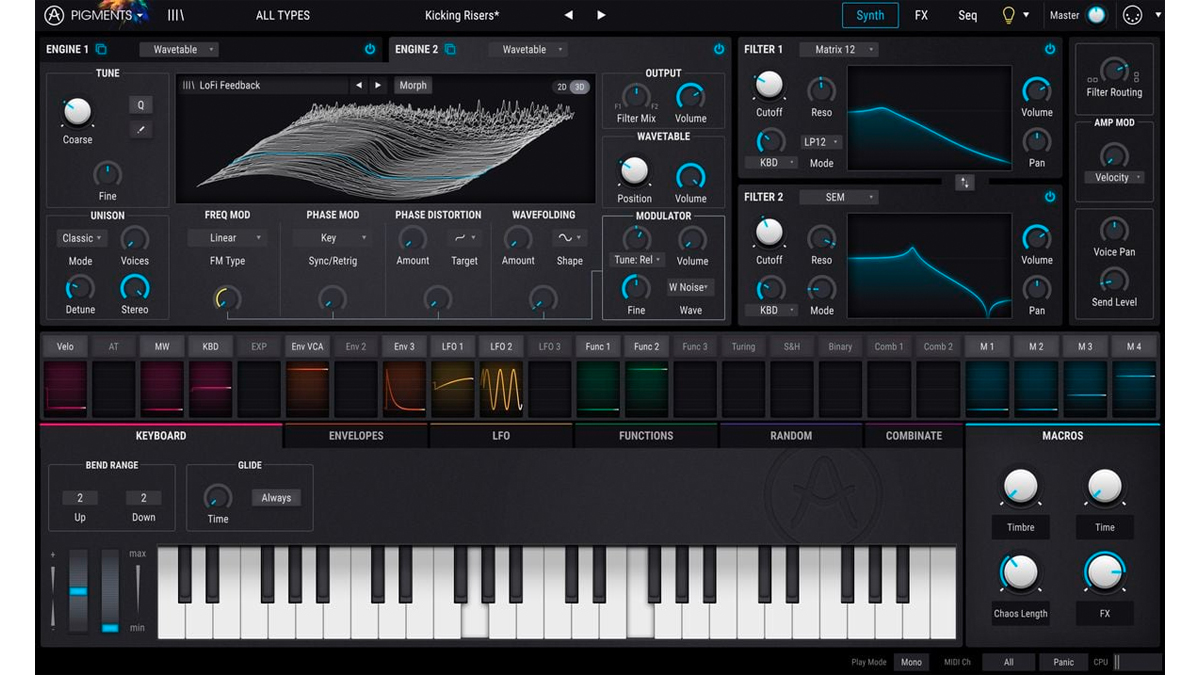Fors launches its first plugin with the Tela synth: "Tela orchestrates a vast array of resonant peaks, intertwined to form a critical mass of sound"
Tela makes use of modal synthesis, a technique used in physical modelling, to create "otherworldly timbres and textures"
Fors is a Swedish developer known for making excellent Max for Live devices such as Opal and Lode. Last week, Fors released its first native instrument plugin outside of Max for Live: Tela.
Tela is a 16-voice polyphonic synthesizer plugin that utilizes modal synthesis to generate sound. Modal synthesis is a technique typically employed in physical modelling synthesizers, which emulate the sound of physical materials like metal or glass. However, Fors is taking a different angle with Tela, exploring the inherent sonic capabilities of modal synthesis to create "otherworldly timbres and textures".
Modal synthesis operates through the use of multiple bandpass filters, arranged in a 'modal bank', which are stimulated with various input sources, causing them to generate sound through resonance. These filters are then stacked up, tuned, attenuated and dampened in a fashion similar to additive synthesis, a method where multiple sine waves, or partials, are layered to create complex tones.
Tela's beautifully-designed UI is organized into a number of different pages, each of which corresponds to a particular element in the sound engine. The Patch page lets you adjust the overall sound of the synth; controls for voice number, pitch, spread, glide and velocity can be found here.

Best synth plugins: Synth VSTs to suit all styles and budgets
The Impulse and Grain pages house controls for the two input sources that can be used to stimulate Tela's modal bank. Here you can change the shape, sound and character of the initial impulses, which can be mixed using a source balance fader. Impulse offers more of a staccato dynamic, whereas Grain can be used to create a sustained tone similar to that of a string or wind instrument.
Tela's Tonality page controls the frequency ratio of each partial in its modal bank, letting you sculpt the timbre and tonality of each synth patch in a number of different ways. The Contour page allows you to control the amplitude of the partials, shaping the dynamics of the sound. Finally, the Space page holds controls for an algorithmic reverb placed in the signal chain as an insert effect.
Each of Tela's pages has its own dedicated LFO which can be used to modulate any of its parameters; the versatile LFO can be synced to BPM or used to track the key of incoming notes. There's a variety of other controls here that'll let you get into some pretty advanced modulation, if you so wish.
Want all the hottest music and gear news, reviews, deals, features and more, direct to your inbox? Sign up here.
Tela ships with a preset bank kitted out with 200 patches cooked up by an impressive array of sound designers and electronic artists, including Mark Fell and KMRU. There's also a randomizer onboard that'll instantly generate a random patch for you at the touch of a button.
Tela is available now for macOS in AU/CLAP formats. The plugin is priced at £45, but you can access a 7-day free trial if you'd like to test it out.
Find out more on Fors' website or watch a walkthrough video below.



I'm MusicRadar's Tech Editor, working across everything from product news and gear-focused features to artist interviews and tech tutorials. I love electronic music and I'm perpetually fascinated by the tools we use to make it.